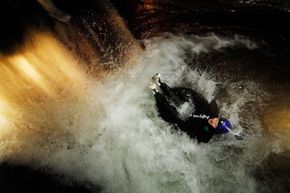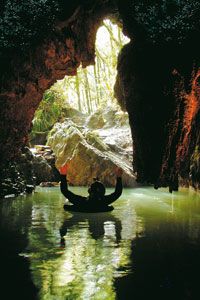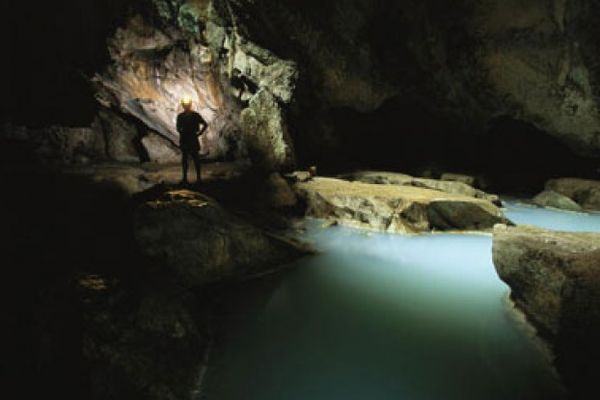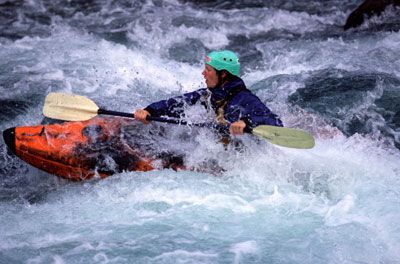In the Waitomo Glowworm Caves of New Zealand, thousands of tiny, phosphorescent creatures light the underground ceiling like constellations. The effect is a silent night sky, all the more silent for cave explorers without footsteps.
It's one of the ways to experience the Waitomo cave system: on the water. A river runs through the below-ground caverns, and back in the 1980s, some caving Kiwis came up with the experience known as black water rafting. It was intended as a new take on caving for those extreme-sports enthusiasts bored of simply trekking through dark spaces by foot. It soon became a big tourist draw, though. It's now one of the most popular shore excursions for cruise line passengers disembarking in Belize, another location where black water rafting has taken off.
Advertisement
In reality, black water rafting happens neither on black water nor on a raft. It's regular old clear water, but it's dark because it's flowing along the floor of a cave, and "rafters" are floating on inner tubes. The experience varies by location, and at each black-watering cave there are a variety of trips available. Some are for novices, slow and calm and without too much scrambling through narrow passages. Others are for more advanced adventurers, with rapids, waterfall drops and rappelling down through 3-foot (91-centimeter) openings to reach the underground river.
Whatever the adventure level of the excursion, black water rafting is a unique experience. And a pretty rare one: Caves in New Zealand and Belize are about the only places it's regularly offered as a guided-tour option. In this article, we'll find out what those underground tours are like, and we'll find out how to safely make the most of a black-water rafting experience.
Black water rafting first became popular in Waitomo, New Zealand, so we'll start there -- with a watery tour through the famous Glowworm Caves.
Advertisement




